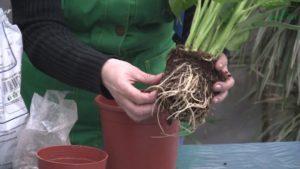Mold on the ground in flower pots: 4 types of growths and methods for dealing with them
An uncharacteristic coating often appears on the surface of the soil in flower pots. Many inexperienced flower growers know little about the causes of its appearance and the threat it can pose to indoor plants.
Content
Causes of mold and plaque in a flower pot
The main reasons for the appearance of various types of plaque on the soil are:
- lack of high-quality drainage in a flower pot;
- improper watering of the plant;
- high humidity in the room;
- the use of soil infected with spores of the fungus;
- using too hard water for irrigation.
What types of mold appear in flower pots
On the surface of the soil in a flower pot, both plaque and spots of various sizes may appear. Most often, the following species live near indoor flowers:
- Black mold. This is one of the most common and most dangerous types of mold that can be found in a residential area. Spots and plaque can be not only on the ground, but also on the plant itself, and even on the pot. It is also worth noting that the mold will not necessarily be black, it can have other shades.
- White mold. This species is often found not only on indoor plants, but also on various wooden surfaces. Outwardly, it resembles fluff. White mold is considered one of the most dangerous species for plants.
- Blue mold. This species is rare on the soil and on indoor flowers, but it poses a serious threat to the lignified parts of the plant.
- Vysoly. Efflorescence is a common salt coating, but it is also often mistaken for mold. Usually they look like a white-yellow coating, but sometimes there may be spots of gray, white or green.
What is dangerous mold in a flower pot
Each of the above types of mold is dangerous in its own way, therefore, at the first sign of appearance, the necessary measures should be taken. The prolonged presence of various stains and plaque on the soil can lead to the following problems:
- violation of air circulation in the soil;
- soil composition changes and becomes unsuitable for plants;
- the root system weakens and begins to rot;
- the green parts of the plant gradually wither, dry and turn yellow.
How to get rid of mold in flower pots
There are many different methods for fighting mold. The choice of a suitable one largely depends on the type of mold, the degree of damage and the main reasons for its appearance. You can get rid of dangerous plaque using the following methods:
- plant transplantation and complete soil replacement;
- the use of bactericidal components and beneficial bacteria;
- moderate watering and use of high-quality water;
- ensuring a normal level of humidity and air temperature in the room.
Conclusion
Plaque that appears on the soil not only spoils the appearance, but can also harm the healthy growth and development of the plant. In addition, some types of mold can spread beyond the flower pot and pose a serious health hazard.
Previous
